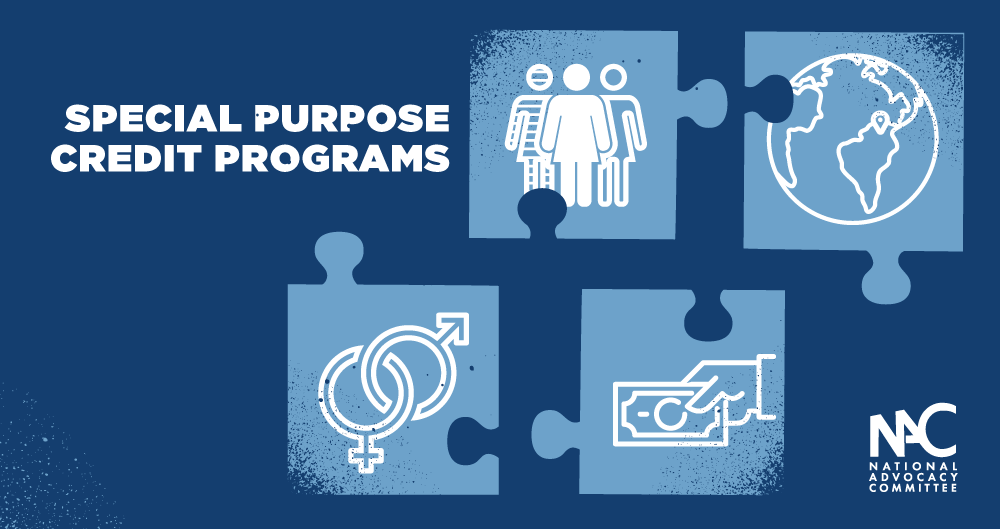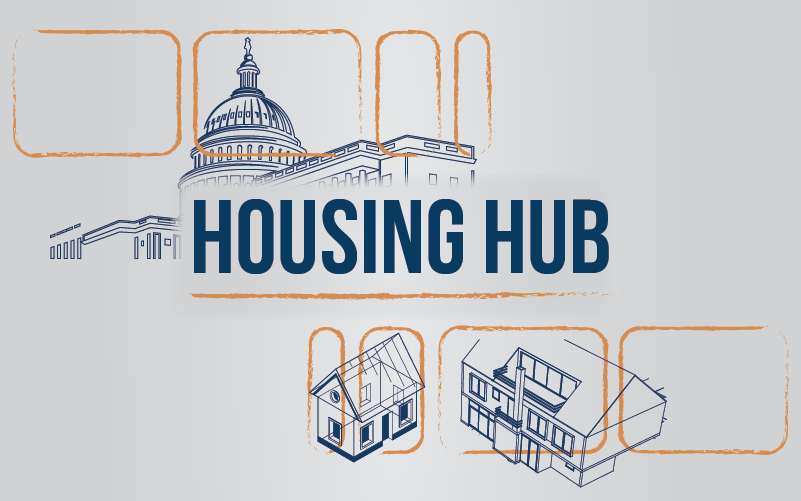A look into Special Purpose Credit Programs
Celebrating NAHREP familia, cultura, politics, and grassroots action
August 18, 2022
Qué onda mi gente?!
Last week, NAC Regional Director Imelda Manzo and I presented on the State of Hispanic Homeownership in San Diego for the San Diego Union Tribune. Following our presentation, one of the attendees asked us if there were any programs that were particularly targeted for the Latino community. This made me think about Special Purpose Credit Programs (SPCP) and the fact that we haven’t talked about them enough here on the blog.
Special Purpose Credit Programs, or SPCPs, have become increasingly popular in the public debate around bridging the racial and ethnic homeownership gaps. Many of you might have heard of them already. For some of you, this is new stuff. The purpose of this blog is to hopefully serve as a catalyst so that you can help spur the creation of more SPCPs, whether it be with the nonprofits around you or through the lenders you work with. As of right now, I have not heard of any SPCP targeted specifically toward the Latino community, but as you can see below, there is nothing preventing us from doing one. Let’s get to work!

¿Qué es eso de SPCPs?
A Special Purpose Credit Program (SPCP) is essentially any loan program that is designated to meet the special needs of economically disadvantaged groups, inclusive of race and ethnicity, national origin, location, or gender. SPCPS are validated through the Equal Credit Opportunity Act (ECOA), and the Consumer Financial Protection Bureau (CFPB) has written guidance on it per the Fair Housing Act. The Equal Credit Opportunity Act is the regulation that ensures people aren’t discriminated against by lenders.
SPCPS can be used to promote equity and inclusion, build wealth, and remove barriers that have contributed to inequities. In other words – SCPSs allow lenders to intentionally and specifically design programs to help underserved groups, such as Latinos.
Is this new? Why is everyone talking about them all of a sudden?
It’s actually not new. There is language allowing SPCPs that was written into ECOA as early as 1974. The purpose was to counteract centuries of unfair laws and policies, such as redlining, that prevented many people of color from building generational wealth.
Lenders seldom do anything unless they feel certain that they aren’t going to get sued (well most of them, anyway). This is why lenders always ask regulators, such as the CFPB, for clear guidance so there are bright lines. Basically, if you do a, b and c, you won’t be held responsible. Following all of the conversations around racial equity and ways to bridge the wealth gap, the CFPB, which now oversees ECOA, developed a set of guidelines that have made entities more comfortable with developing SPCPs. Specifically, they promised steps to “help create real and sustainable changes in our financial system so that … underserved groups have equal opportunities to build wealth and close the economic divide.” So, they have reminded creditors that SPCPs can be used. Since then, the U.S. Department of Urban Development (HUD) and the Office of the Comptroller of the Currency (OCC) have also issued guidance on the use of SPCPs.
Let’s not forget, people of color, especially Latinos, are essential to the future of the real estate market. It is a business imperative that we create programs that overcome the structural barriers that prevent access to credit.
So, what SPCPs already exist?
Chase has developed an SPCP that provides down payment and closing cost assistance grants.
TD Bank developed an SPCP Mortgage product in targeted geographies.
LISC San Diego provides down payment assistance (DPA) for Black homebuyers in the San Diego area.
Homeownership Council of America launched Equity DPA, a soft-second down payment and closing cost assistance program designed to provide financing for low-to-moderate income borrowers, people of color, and first-time homebuyers.
City First Homes provides an affordable second mortgage of up to 20 percent loan-to-value (LTV) for qualifying African-American and Hispanic first-time homebuyers.
This is great! Why aren’t more lenders and nonprofits doing these?
Well, many lenders want to do one and are working out the details as we speak. However, there are liability risks. It is important that lenders and nonprofits work with their legal teams to properly design these programs.
For example, there is fear of litigation coming from the following:
- Government oversight risk. The first is the possibility that government enforcement or regulatory action would come from an SPCP. Given that all of the government agencies have expressed strong support for them, this is unlikely. However, there is the risk of a change in political control could change that. In my opinion, this risk is low because of the broad support among financial services, real estate, fair housing, and other non-profit communities.
- Investors or purchasers of loans. The next area of liability risk comes from program requirements or purchase agreements when lenders go to sell their loans. The Government Sponsored Enterprises (GSE), Fannie Mae, Freddie Mac, and Ginnie Mae have been very supportive of SPCPs as well. The GSEs will likely release guidance soon. Privately securitized SPCP loans raise interesting questions about the design, sale, and securitization of the loans (this is why you need lawyers involved!).
- Private litigation.The final general area of liability is a challenge from a private citizen who was denied the opportunity to participate in the SPCP. However, there are strong protections built into the regulation to guard the lender or non-profit from this risk as long as it is done in good faith and follows the interpretation of the regulation. Note that the design of the SPCP can also limit risk, and again, this is why legal counsel is so important.
Despite some hesitation, these programs are being done successfully. Even better, the Mortgage Bankers Association (MBA) and National Fair Housing Alliance (NFHA) have recently released a toolkit that can help lenders safely and effectively develop more of these programs. Please share this toolkit with interested parties and let’s get to work!

About Noerena Limón
Noerena Limón is NAHREP’s Executive Vice President of Public Policy and Industry Relations. Noerena heads the organization’s policy and advocacy efforts on issues ranging from homeownership, housing inventory, credit access and immigration.
Prior to joining NAHREP, Noerena spent six years at the Consumer Financial Protection Bureau (CFPB) and served as a political appointee under President Obama in the White House Office of Political Affairs.




